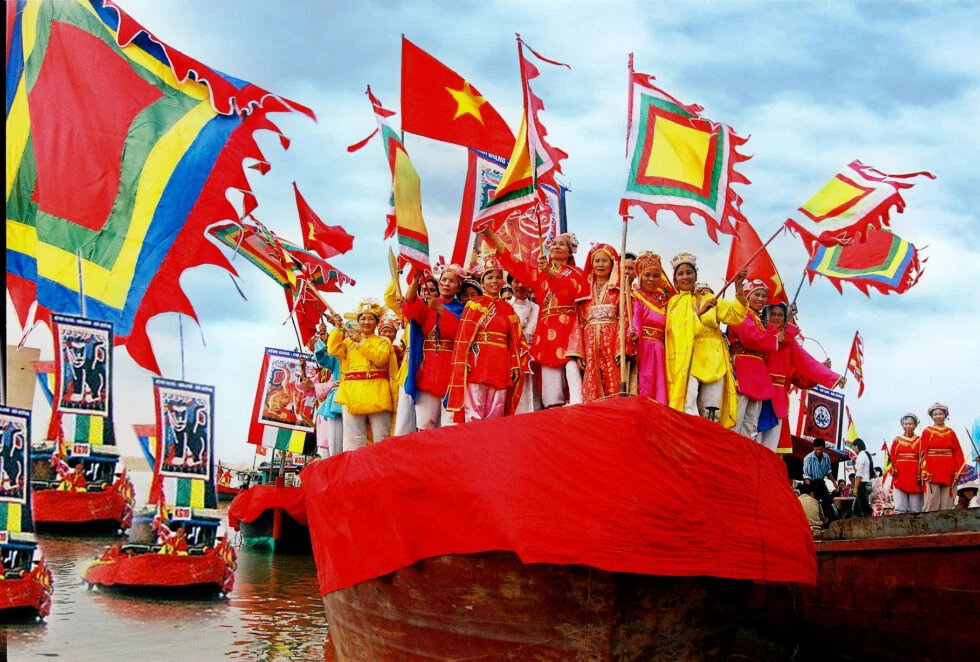
This change has sparked anticipation among travel companies, hotels, and restaurants for an influx of international tourists post-August 15, coupled with the hope for increased daily tourist expenditures.
However, seasoned observers of the tourism industry believe that while the number of tourists might rise, the increase may not be as substantial as expected. Simply extending the length of stay isn't sufficient; other elements must also undergo transformation to prevent prolonged visits from becoming mundane. The traditional draws like delectable cuisine, picturesque landscapes, and hospitable locals need to be amplified. Furthermore, novel aspects like the night economy, sidewalk commerce, regional culture, and identity demand elevation to match global standards.
The key to luring tourists boils down to two words: "unique and different." If Vietnam's "tourist attractions" fail to offer anything distinct from destinations like Thailand, Singapore, and Malaysia, visitors will quickly lose interest and refrain from returning. Phu Quoc's loss of appeal among foreign tourists, especially Europeans, can be attributed to its proliferation of imitations of architectural styles and landmarks from Spain, Italy, Greece, Rome, the Maldives, and elsewhere, rendering them all too familiar.
The Appeal of Local Festivals
One cultural facet that resonates with foreign tourists is local festivals. These events provide insight into the culture, customs, and people of each region. Festivals foster inclusivity, allowing the elderly, children, young adults, and women to participate according to their strengths and abilities. Such events unite individuals of diverse backgrounds, colors, races, religions, and nationalities, all rejoicing together. Even when languages differ, the festive spirit transcends barriers, creating a unique experience for foreign visitors in foreign lands.
Vietnam boasts a rich tapestry of festivals, numbering nearly 9,000 in total. These encompass approximately 7,000 traditional folk festivals, nearly 1,400 religious celebrations, and over 400 historical and revolutionary commemorations, without counting professional, community, and religious festivals. The Red River Delta, the birthplace of wet rice civilization, stands as a hub for festivals, with each village and clan boasting its unique celebration. A salient feature of these festivals, whether ceremonial or celebratory, is their introspective nature. Born from agricultural roots behind village bamboo walls, they are primarily intended to serve and gratify the community and kin. Even festivals in the South, though more open in ritual and ceremony, remain deeply intertwined with their respective communities.
This strong introversion poses a challenge for outsiders, who can merely observe without active participation. Their involvement is largely confined to enjoying post-festival meals. Additionally, certain post-festival activities, such as buffalo slaughter or pig butchering, can be unsettling for foreigners. Mr. Michael, an anthropologist residing in Vietnam for over five years and fluent in the language, humorously expressed on his Facebook that "attending Vietnamese festivals is as perplexing as a cow wearing a hat" due to the insurmountable barrier for outsiders to fully engage.
Embracing a Culture of Participation
In contrast, other countries host festivals that are open to all, not just family members. Take, for instance, the traditional water festivals celebrated in April across Thailand (Songkran), Myanmar (Thingyan), Laos (Pimai), and Cambodia (Chaul Chnam Thmey). During these festivities, all, including foreigners, join in, enthusiastically reveling in what they often term "delightful chaos," even when drenched. Across Europe, festivals encourage widespread participation. Notable examples include Spain's Tomatina Festival, which sees the hurling of 200 tons of tomatoes, and Italy's three-day Orange Throwing Festival, consuming 300,000 kg of oranges.
Germany's Oktoberfest (October) sees rivers of beer flowing, attracting millions of attendees, while the annual sausage festival boasts 250 sausage varieties. Wine enthusiasts gather for festivals like Bandol Wine Festival in Provence, France; Wine Down Under in Australia; Mosel Wine Festival in Germany; Sherry Festival in Jerez, Spain; and Chianti Festival in Tuscany, Italy. India's Holi Festival, renowned as the "Festival of Colors," draws millions for its vibrant color-powder throw.
These festivals share a defining characteristic: participation. Their magnetism is reflected in hundreds of thousands, even millions, of foreign visitors attending, generating substantial revenue. For instance, Dio Dejanero's Carnaval festival in Brazil amassed over USD 1 billion in revenue, underscoring the immense allure of festivals.
In recent years, certain localities have endeavored to create participatory attractions, such as the stilt dancing and Xoe dancing of the Thai people, and gong dancing among the Central Highlands people. Some regions have imported festivals from abroad, like Quang Ninh's Carnaval festival, District 7 HCMC's Halloween festival, and the skydiving festival in Mu Cang Chai, Yen Bai. While these efforts are commendable, they remain modest, often yielding insufficient impact.
To truly engage global tourists, research into introducing modern festivals and enhancing existing ones in terms of scale and structure is necessary. Only then can visitors from around the world actively partake in the joyous celebrations.




















